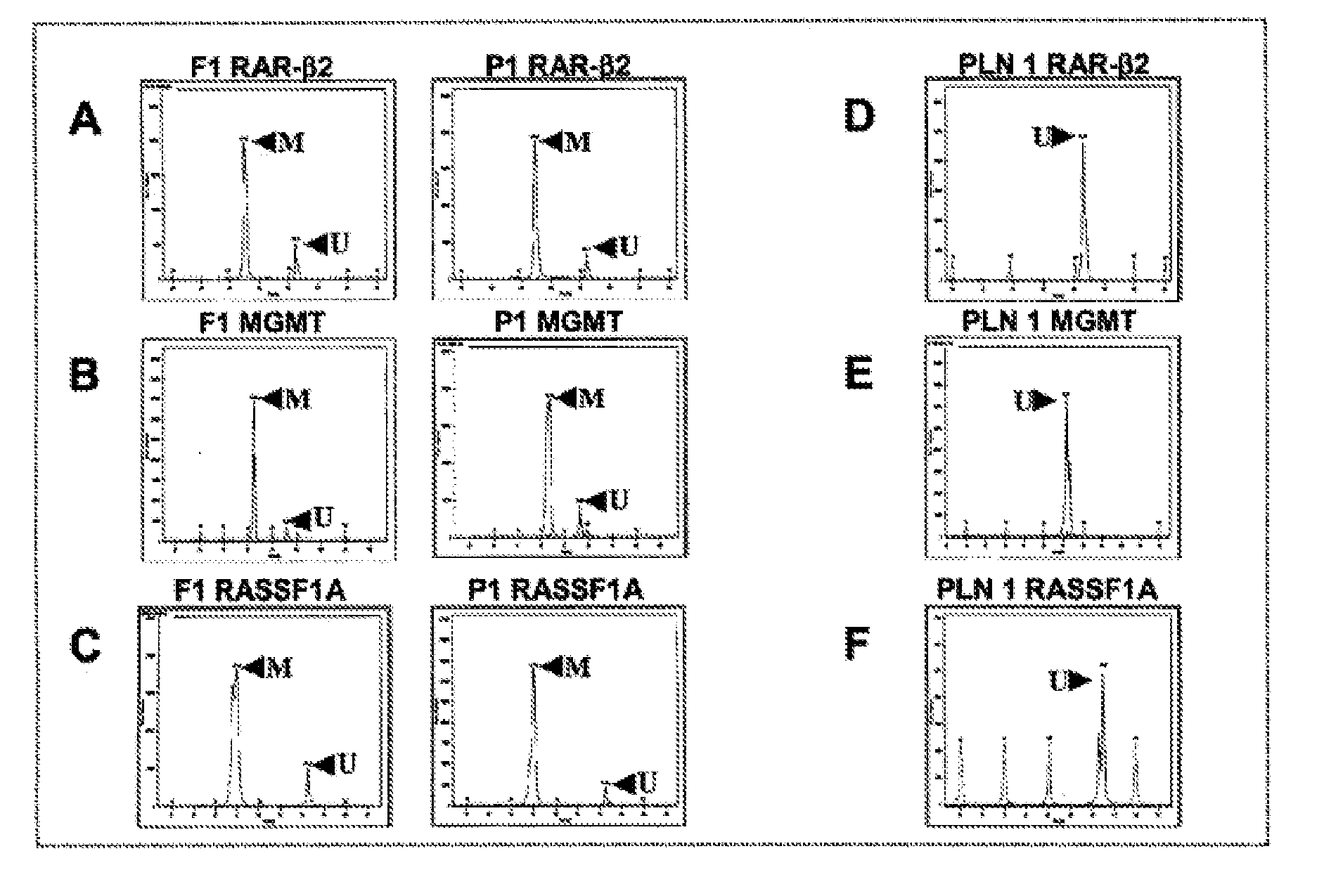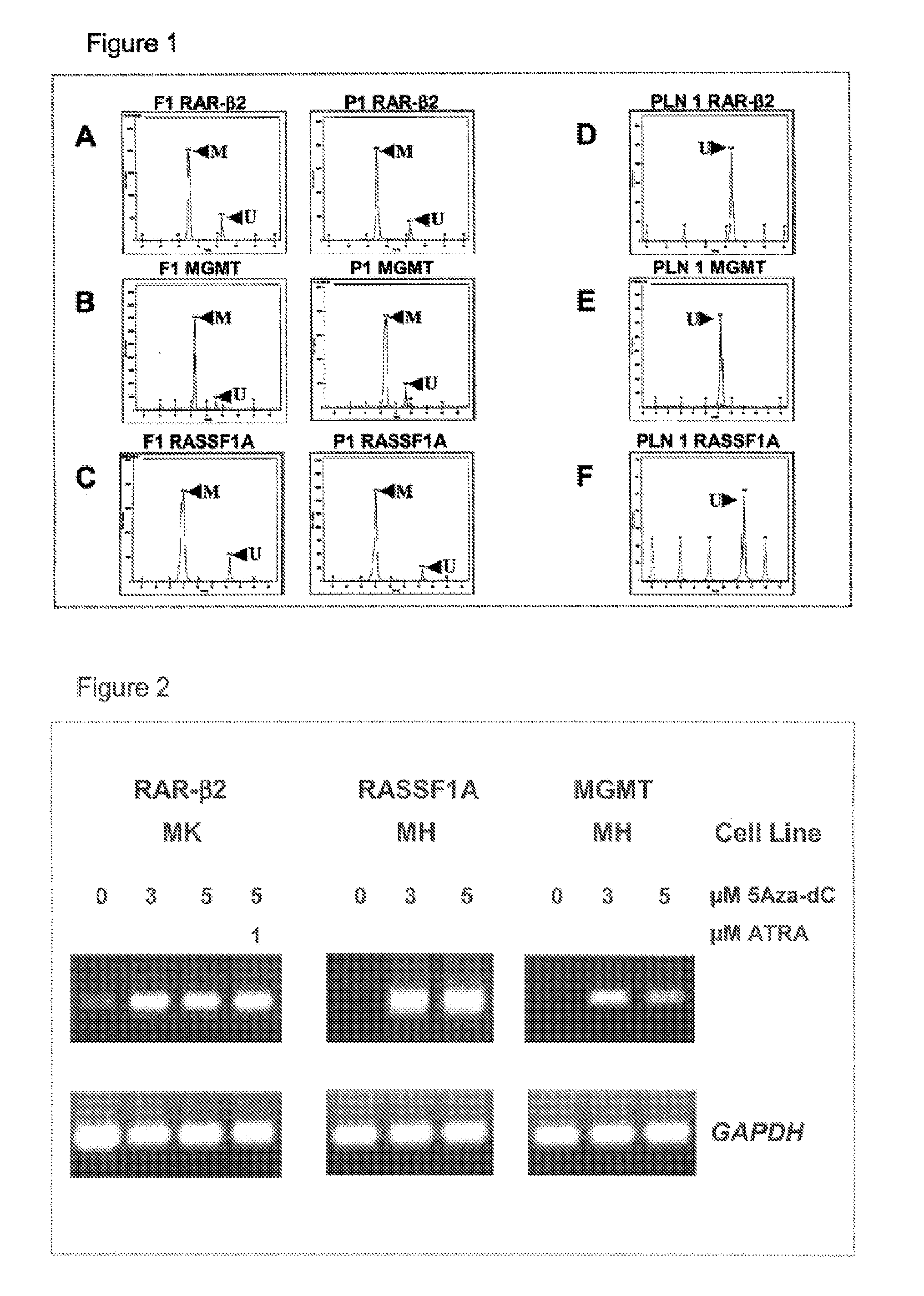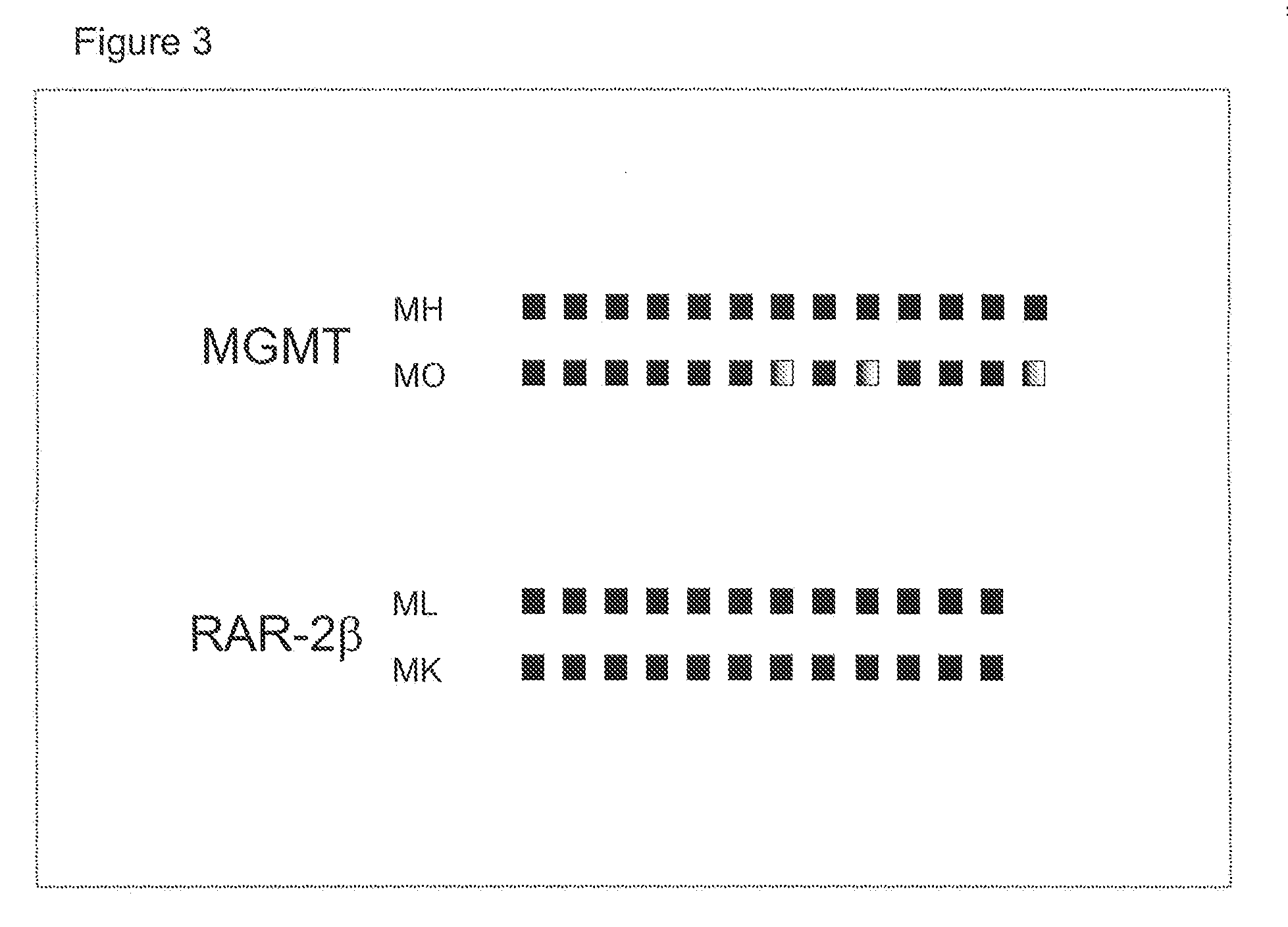DNA markers for management of cancer
a technology of dna markers and cancer, applied in the field of molecular biology and oncology, can solve the problems of inconvenient cytologic analysis of many cytologic samples, difficult to accurately analyze many cytologic samples, and poor overall prognosis, so as to improve the staging of the disease and monitoring, and the effect of minimal invasiveness
- Summary
- Abstract
- Description
- Claims
- Application Information
AI Technical Summary
Benefits of technology
Problems solved by technology
Method used
Image
Examples
example 1
Identification of Circulating Tumor-Associated Epigenetic Alterations in the Bone Marrow from Breast Cancer Patients Using a Hypermethylation Gene Panel
Introduction
[0071]A variety of genetic alterations including microsatellite instability, allelic loss, and mutation have been described in primary breast cancers. These events result in loss of gene function and have been implicated in tumor development and progression. Clinical tools (i.e., radiographic) used to detect breast cancer progression have been limited particularly in the era of earlier disease diagnosis. The most sensitive method for the identification of breast cancer progression at the time of patient diagnosis is histopathologic lymph node evaluation. However 20-30% of node-negative breast cancer patients will develop recurrent disease within 10 years (Fisher et al 1989 and Rosen et al 1989). Therefore, recurrence may be considered a consequence of occult metastasis not detected at the time of patient diagnosis and tre...
example 2
Distinct Hypermethylation Profile of Primary Breast Cancer is Associated with Sentinel Lymph Node Metastasis
Introduction
[0088]Improved access to mammography and increased patient awareness in breast cancer screening have resulted in a dramatic increase in the detection of early breast cancers (Cady et al 1996; Shapiro 1982; Tabar 1985; and Miller et al 1993). As important, at the time of breast cancer diagnosis, is the identification of concurrent metastatic disease for accurate patient staging and therapeutic decision making. Axillary lymph node dissection (ALND) has provided an invaluable approach to assess for the presence of tumor cell metastasis, particularly in early disease states where standard radiographic imaging is less sensitive. However, ALND can be associated with considerable morbidity including lymphedema and reduced shoulder mobility (Ivens et al 1992 and Warmuth et al 1998). In addition, ALND often requires general anesthesia, in patient hospitalization and a posto...
example 3
Profiling Epigenetic Inactivation of Tumor Suppressor Genes in Tumors and Plasma From Cutaneous Melanoma Patients
Introduction
[0110]Epigenetic events in the form of hypermethylation of TSG promoter region(s) CpG islands can play a role in the development and progression of various cancers (Baylin et al 2000; Esteller et al 2001; Jones et al 2002; and Sidransky et al 2002). The detection of hypermethylated genes in tumors has become important in assessing the mechanisms of known and candidate TSG inactivation. Genes can be transcriptionally silenced when their promoter region(s) CpG islands are hypermethylated (Jones et al 2002). Recent studies have shown this is a significant mechanism whereby TSG expression is shut off in cancer cells (Baylin et al 2000; Esteller et al 2001; Jones et al 2002; Sidransky et al 2002). The hypermethylation status of several known or candidate TSG promoter regions has been profiled for a number of cancers (Esteller et al 2002; Harden et al 2003; Jeronimo...
PUM
| Property | Measurement | Unit |
|---|---|---|
| size | aaaaa | aaaaa |
| temperatures | aaaaa | aaaaa |
| temperatures | aaaaa | aaaaa |
Abstract
Description
Claims
Application Information
 Login to View More
Login to View More - R&D
- Intellectual Property
- Life Sciences
- Materials
- Tech Scout
- Unparalleled Data Quality
- Higher Quality Content
- 60% Fewer Hallucinations
Browse by: Latest US Patents, China's latest patents, Technical Efficacy Thesaurus, Application Domain, Technology Topic, Popular Technical Reports.
© 2025 PatSnap. All rights reserved.Legal|Privacy policy|Modern Slavery Act Transparency Statement|Sitemap|About US| Contact US: help@patsnap.com



